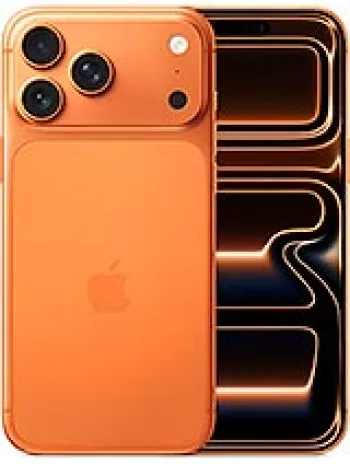
Overview and History
The Apple iPhone 4s was a landmark device launched on October 4, 2011. Released on October 14, 2011, it marked a significant evolution in the iPhone lineup, preserving the aesthetic of its predecessor while introducing numerous hardware and software upgrades. Although it has since been discontinued, the iPhone 4s remains a noteworthy example of smartphone technology from the early 2010s.
Design and Build Quality
The iPhone 4s maintained the iconic design of the iPhone 4 with glass front and back panels that were reinforced with a stainless steel frame. Measuring 115.2 x 58.6 x 9.3 mm and weighing 140 grams, the device was remarkably compact and light, ensuring easy handling and portability. The build quality was a standout feature, offering a premium feel that set a benchmark for future smartphones.
The device was available in two classic colors, Black and White, appealing to both professional and casual users.
Display
The iPhone 4s featured a 3.5-inch IPS LCD screen with a resolution of 640 x 960 pixels, resulting in a pixel density of approximately 330 ppi. The display was remarkably sharp and vibrant owing to the Retina technology, which was a defining feature of Apple devices. Protection was assured by the toughened Corning Gorilla Glass and an oleophobic coating that reduced fingerprints and smudges.
Hardware and Performance
At the heart of the iPhone 4s was the Apple A5 chipset built on a 45 nm process. The dual-core 1.0 GHz Cortex-A9 CPU and PowerVR SGX543MP2 GPU delivered impressive performance for its time, allowing for smooth multitasking and responsive gaming experiences. It came equipped with 512MB of RAM and storage options of 8GB, 16GB, 32GB, and 64GB. However, it lacked a card slot, preventing memory expansion.
Camera Features
The iPhone 4s was equipped with an impressive 8 MP rear camera, featuring an aperture of f/2.4. The camera offered advanced features like autofocus, LED flash, panorama, and HDR capabilities, ensuring that it delivered quality photos consistently. The device was capable of capturing 1080p video at 30fps.
On the front, the VGA camera facilitated video calling over Wi-Fi and 3G, recording 480p video at 30fps.
Networking and Connectivity
The iPhone 4s supported multiple network technologies, including GSM, CDMA, HSPA, and EVDO. With 2G and 3G bands support, and HSPA data speeds of up to 14.4 Mbps, users could enjoy a seamless browsing experience.
For local connectivity, the device featured Wi-Fi 802.11 b/g/n and Bluetooth 4.0 with A2DP and LE support. Positioning services such as GPS, A-GPS, and GLONASS were also available.
Operating System and Software
Shipped initially with iOS 5, the iPhone 4s was one of the first devices to introduce Siri, Apple's iconic voice assistant. Users could upgrade the OS up to iOS 9.3.6 over time. The software ensured an intuitive user experience, thanks to Apple’s seamless integration of hardware and software.
Battery Life
The device powered by a non-removable Li-Po 1432 mAh battery (5.3 Wh) provided a standby time of up to 200 hours on 3G and up to 8 hours of talk time on a 3G network. While not extraordinary by today's standards, it was sufficient for moderate usage.
Audio and Media
Sound technology in the iPhone 4s included a satisfactory loudspeaker and a 3.5 mm headphone jack, accommodating a range of traditional audio peripherals. The device delivered clear audio with low noise and crosstalk levels, making it suitable for media consumption.
Sensors and Additional Features
Apple incorporated a variety of sensors including accelerometer, gyro, proximity, and compass into the iPhone 4s. These sensors enhanced the device functionality enabling applications like navigation, gaming, and more.
Conclusion
The Apple iPhone 4s represented a significant technological milestone in 2011. With its aesthetic design, enhanced hardware capabilities, innovative software features, and robust camera specifications, it set a new benchmark for future smartphones. Despite its discontinuation, the iPhone 4s remains an exemplary model in Apple's rich history of innovation, holding a special place in the timeline of mobile communication devices.
Key Features of Apple iPhone 4s
- Network Support: GSM/CDMA/HSPA/EVDO
- Compact Dimensions: 115.2 x 58.6 x 9.3 mm
- Sturdy Build: Glass front and back with stainless steel frame
- Display: 3.5-inch IPS LCD with 640x960 resolution (~330 ppi)
- Protected by Corning Gorilla Glass with oleophobic coating
- Upgradable OS: From iOS 5 to iOS 9.3.6
- Performance: Dual-core 1.0 GHz Cortex-A9 and Apple A5 chipset
- Camera: 8 MP main camera with LED flash, panorama, HDR
- Video Recording: 1080p@30fps
- Front Camera: VGA for video calling over Wi-Fi and 3G
- Connectivity: Wi-Fi 802.11 b/g/n, Bluetooth 4.0, GPS, A-GPS, GLONASS
- Audio: 3.5mm headphone jack and loudspeaker
- Sensors: Accelerometer, gyro, proximity, compass
- Battery Life: Up to 8 hours of talk time (3G), 200 hours standby (3G)
- Available Colors: Black, White
Apple iPhone 4s Drawbacks
- Limited connectivity with no radio support.
- Non-removable battery design.
- No expandable storage due to lack of microSD card slot.
- Relatively low-resolution front camera (VGA quality).
- Small screen size of 3.5 inches might be limiting for modern usage.
- Thicker bezels resulting in a lower screen-to-body ratio (~54%).
- Discontinued status means no official support or updates.
- Older chipset (Apple A5) which can lead to performance issues with modern applications.
- Limited RAM (512MB), impacting multitasking capabilities.
- Somewhat heavier than other similar-sized devices (140g).

























View Also
More Phones
All Rights Reserved +14267 Phones © Mobilawy 2025

























